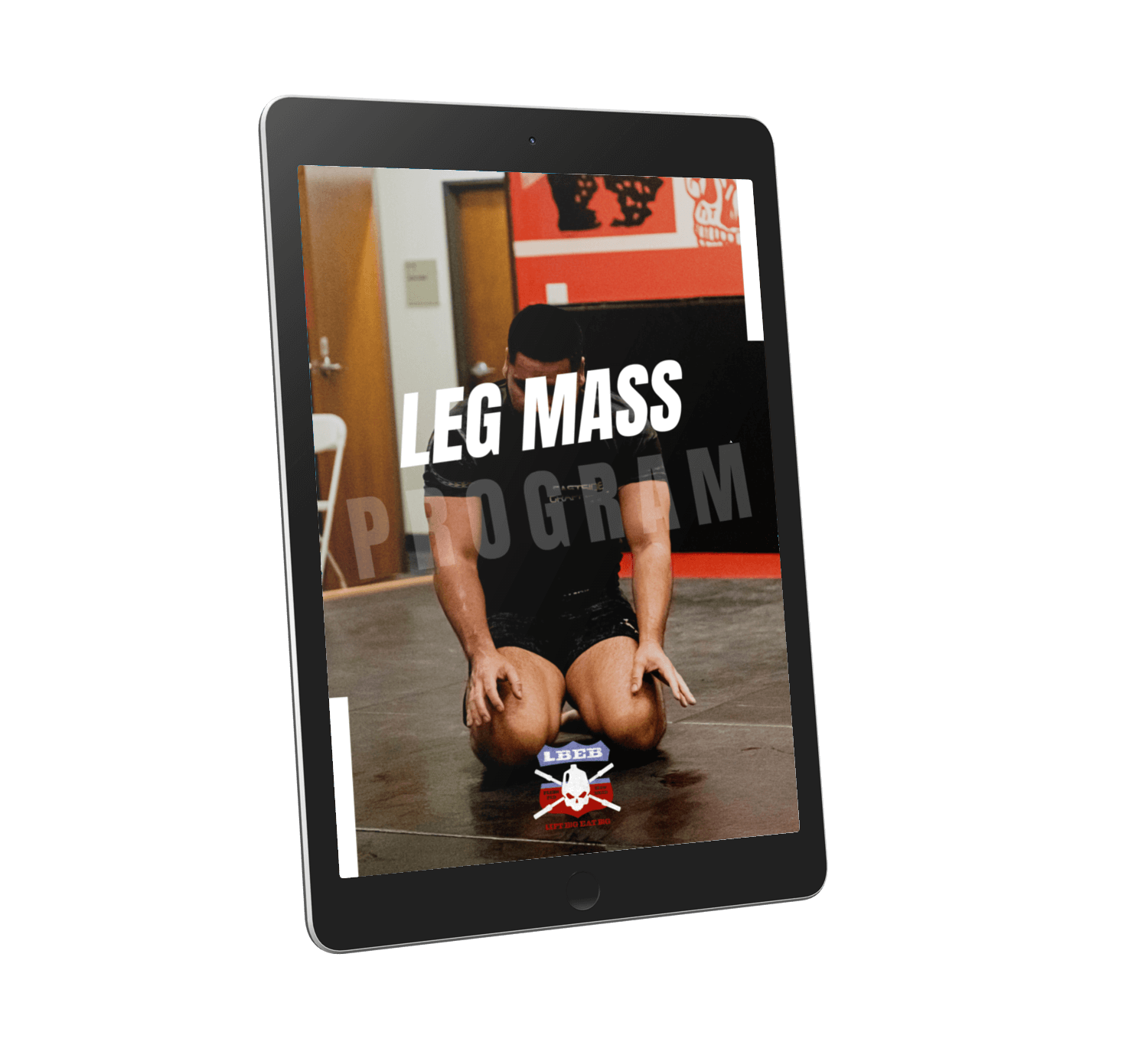They are often confused. Many people will call a split squat a lunge and a lunge a split squat. But there are critical differences between the two exercises, which is why they have distinct names.
The split squat is a stationary exercise, while the lunge involves movement and impact. The split squat may be better for strength and athletic performance, while the lunge may be better for building muscle mass.
If you’re wondering if the split squat or lunge is right for you, I’ve broken down the use case of each and which muscles you will target.
Table of Contents
Split Squat vs. Lunges Muscles Worked
Both the split squat and lunge work similar muscles. That is, the quadriceps, hamstrings, and glutes. Depending on the type of lunge, specific muscles will be stressed to a greater extent, such as reverse lunges targeting the glutes and forward lunges generally challenging the quads.
This is because of the shin angle when lunging. The shin stays vertical during a reverse lunge, whereas the knee tracks forward in a forward lunge, placing more stress on the quads. The same rules apply to the split squat. If split squatting with a vertical shin, greater emphasis is placed on the glutes.
Split squatting by pushing your knee forward will target the quads. That doesn’t mean you’re only targeting one muscle group. The quads and glutes will always work during the split squat and lunge.
Split Squat vs. Lunges Technique
The lunge has many different variations. I’ll be detailing how to do each one.
Split Squat

The split squat is a stationary exercise with the feet staggered and the hips moving vertically while the knees bend. It is often an introductory exercise before teaching the lunge. Here’s how to do it:
- Take a large step forward with your weight distributed evenly between both feet.
- Lower your hips vertically by lowering your back knee to the floor. Once your knee is slightly above the floor or your front thigh is parallel to the floor, drive the front leg into the floor to push into the starting position.
When setting up the split position, step forward and slightly out to the side. This will widen your base for more stability. If you have tight hip flexors, you will feel an intense stretch in your back quadricep. Only descend as far as you can tolerate. It will loosen over time.
Forward Lunge
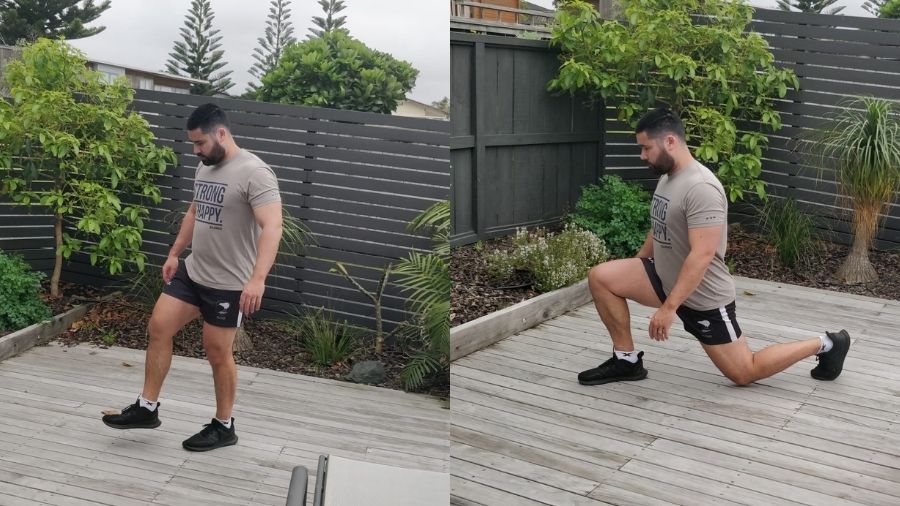
The forward lunge involves taking a step forward followed by a powerful push back. It is usually the first lunge variation taught after the split squat, as it is the easiest to learn. Here’s how to do it:
- Take a moderately large step forward and slowly lower yourself until the thigh is parallel with the floor. Your front knee should be above or slightly in front of your toes, with your back knee bent and slightly behind the hips.
- With the front leg, push back until your legs are together again at the starting position.
- Maintain an upright torso throughout the entire movement.
When you step forward to lunge, step slightly out to the side instead of straight ahead. This will provide you with a broader base and more stability.
Lateral Lunge
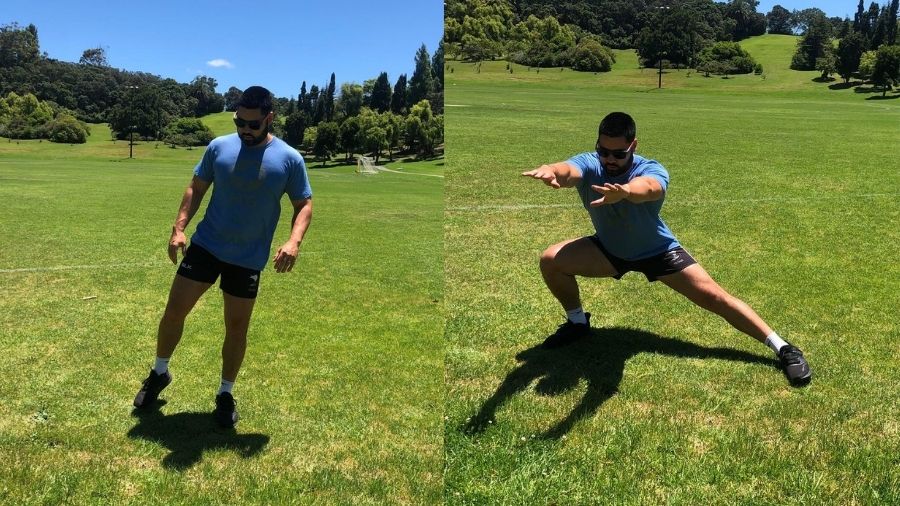
The lateral lunge involves taking a step to the side followed by a powerful push laterally. This is the most advanced lunge variation and requires hip mobility to perform well. Here is how to do it:
- Take a relatively large step to the side and lower yourself until your thigh is parallel with the floor. You should turn your foot slightly out, and your trailing leg should be straight. The trailing leg should be flat on the floor.
- The knee should track in the same direction as the foot. With the bent leg, push laterally back to the starting position.
The lateral lunge may cause pain in the groin area for those who are very tight, and it can be difficult for some to keep their feet flat due to mobility issues. Only go as low as you can tolerate.
Reverse Lunge
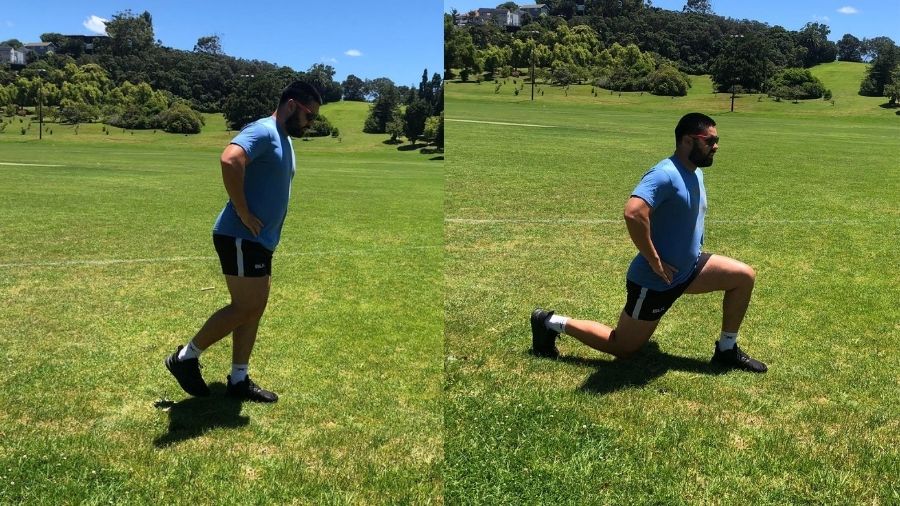
The reverse lunge involves taking a small step back followed by a powerful push forward. It makes an excellent lunge variation to target the glutes. Here’s how to do it:
- Step back so the back knee is under the hips and lower yourself until the front leg thigh is parallel to the floor. The back knee should be bent to approximately 90°.
- With the front leg, push forward explosively until your legs are together again at the starting position.
Like the forward lunge, step back and slightly out to the side. This will widen your base giving your more stability.
Walking Lunge
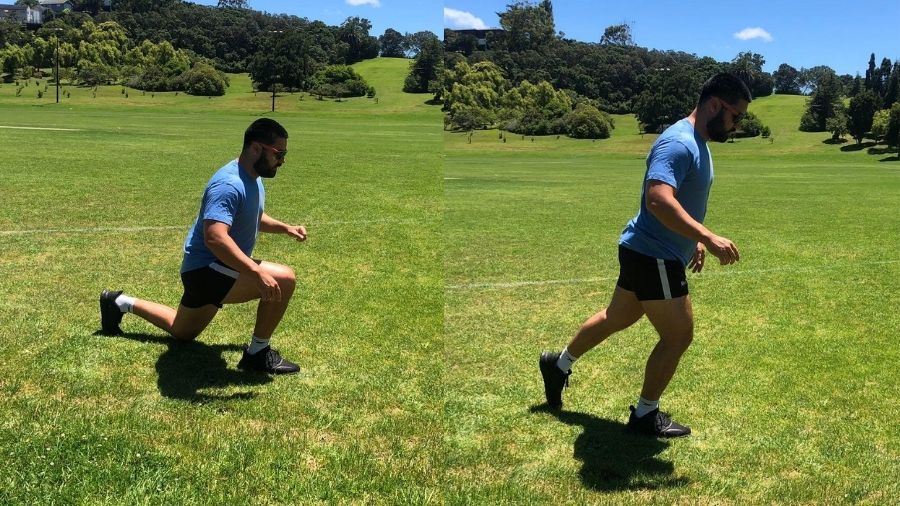
The walking lunge is performed just like the forward lunge, except the back leg comes past the front leg so that you are walking forward. This is a great way to challenge yourself by lunging a prescribed distance if you have the space. Here’s how to do it:
- Step forward and lower yourself until the thigh is parallel with the floor. The back leg will be bent with the knee slightly behind the hips, identical to the forward lunge.
- Push up and forward with the front leg and in one motion, bring the back leg through until the foot touches the ground in front of you.
- Repeat the motion for the desired number of reps.
Don’t walking lunge like you’re on a tight rope. Balance becomes an issue when walking instead of being in place when lunging. So, step slightly out to the side to widen your base and increase stability.
Split Squat vs. Lunges For Mass
Both the split squat and lunge are epic muscle mass builders. There’s a reason they are present in so many hypertrophy programs. The main reason for their inclusion is performing ultra-high reps without systemic fatigue.
Both the split squat and lunge have unique advantages. You can load the split squat the heaviest. Since you’re performing the exercise in place, you don’t have other movements reducing your balance.
So, heavy barbell loads and even hands-supported safety bar split squats can be the main strength and hypertrophy exercises to build muscle. Doing this will maximize the tension on the quadriceps and glutes. That’s not to say you can’t also perform high rep split squats to feel the burn.
While you can’t load the lunge as heavily, the alternating legs make them more bearable when performing high reps. Because each leg gets a short rest between reps, some lactate and the accompanying hydrogen ions that contribute to fatigue and the burn can be cleared.
Instead of performing 20-30 reps as you would in the split squat before falling over, you can lunge football field lengths before giving in. That doesn’t mean you can’t lunge with one leg only if you love the pain.
Further, you have more variation with the lunge. Lateral, reverse, forward, and walking will ensure you never get bored when gaining mass on your legs.
Split Squat vs. Lunges For Glutes
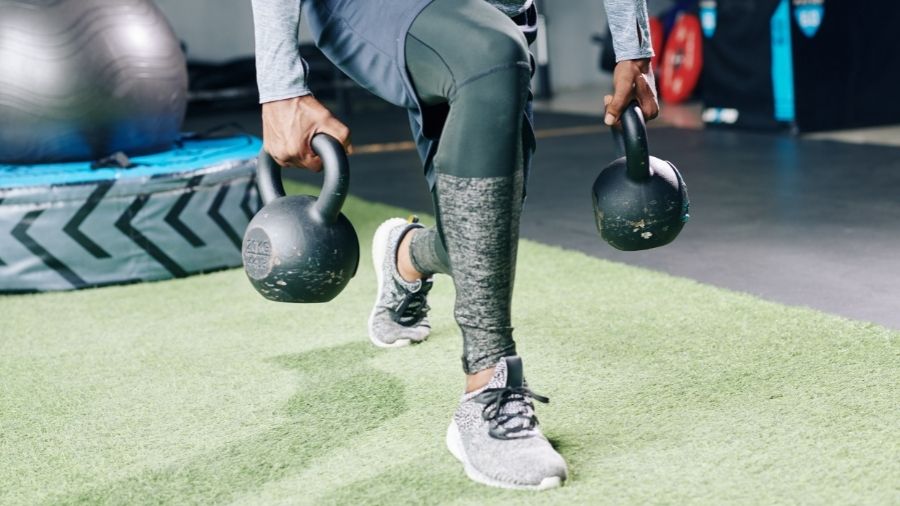
Both the split squat and lunge are great for building bigger glutes. Interestingly, the walking lunge increases gluteus medius muscle activation compared to the split squat [1]. This can be enhanced by holding a dumbbell in the opposite hand to the forward leg [2].
We could assume that the forward and lateral lunge may result in similar muscle activation as the impact with the ground, and stabilize seems to be why.
The split squat and reverse lunge with a vertical shin is best for overall glute development. If you are very in tune with your body, try to pull yourself back to the starting position with your glutes.
Split Squat vs. Lunges For Athletic Performance
Split squats have a better transfer to athletic performance, in my experience. Purely because you can load it heavy enough to be the main strength movement. The lunge can only be an accessory exercise because of its balance requirements.
Heavily loaded split squats, especially the hands-supported safety squat bar variation, is an epic single-leg exercise having you jumping and sprinting faster than ever. In saying that, there is one lunge variation that I use as a staple exercise for athletic performance.
That is the lateral lunge. Most lifting in the gym is performed vertically. Squats, power cleans, and deadlifts are all performed straight up and down. Sport, however, requires movement in all directions. And dramatic lower body injuries tend to occur when changing direction (e.g., moving laterally when performing a cut).
The lateral lunge takes athletes out of the straight up and down to develop strength in the lateral direction. Overall, you can potentially reduce your risk of injury and even enhance your change of direction performance.
Split Squat vs. Lunges: Which Is Better?
Both the split squat and lunge have their purpose. Not one is better than the other. However, the split squat may have the edge for athletic performance. In contrast, the lunge may have the edge when it comes to building muscle mass.
Grow Enormous Legs That Won’t Fit Your Jeans
A leg specialization program to bust through muscle growth plateaus and finally throw away those skinny jeans.
References
1. Stastny, P., Tufano, J. J., Lehnert, M., Golas, A., Zaatar, A., Xaverova, Z., & Maszczyk, A. (2015). Hip abductors and thigh muscles strength ratios and their relation to electromyography amplitude during split squat and walking lunge exercises.
2. Stastny, P., Lehnert, M., Zaatar, A. M., Svoboda, Z., & Xaverova, Z. (2015). Does the dumbbell-carrying position change the muscle activity in split squats and walking lunges?. Journal of strength and conditioning research, 29(11), 3177.

